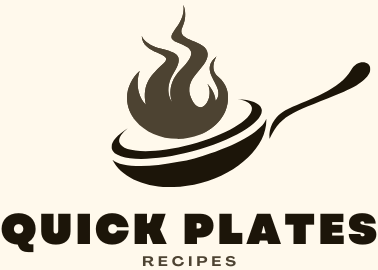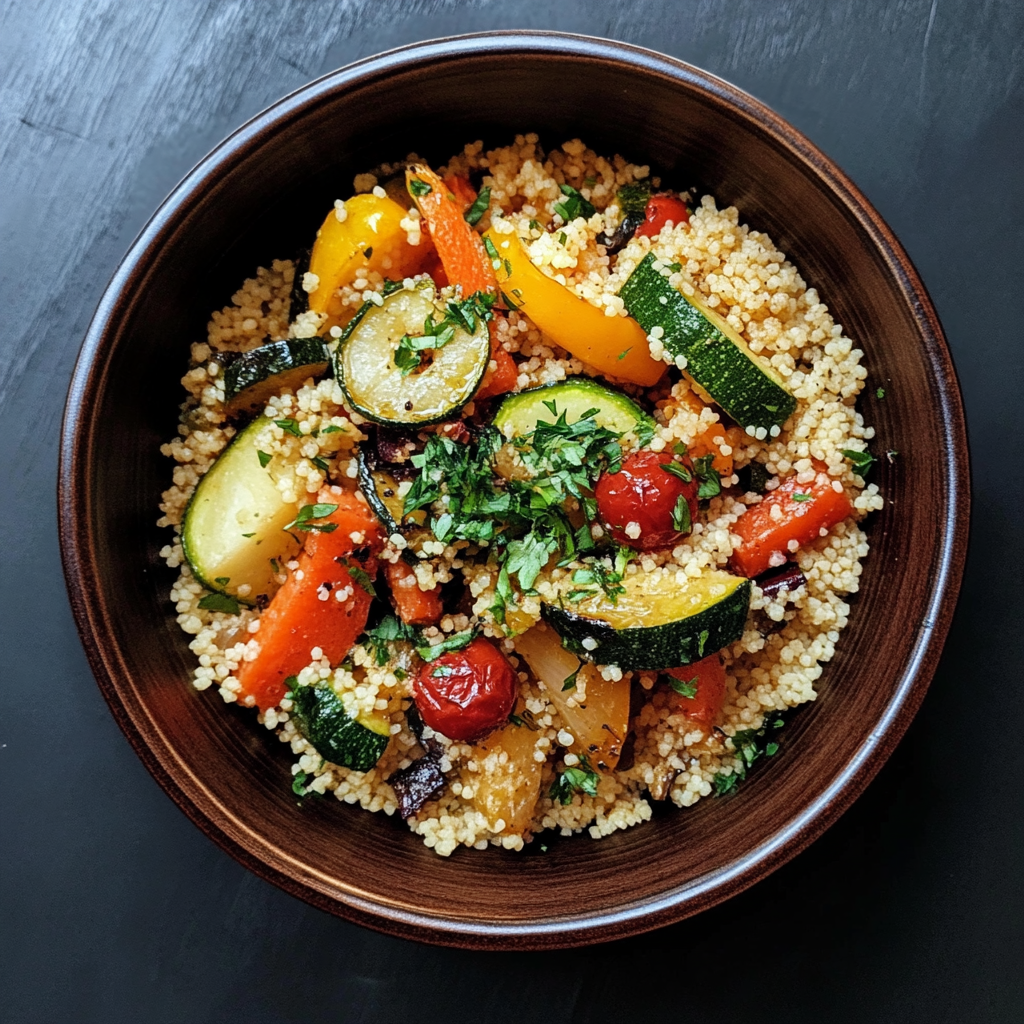Couscous is a versatile and flavorful grain that has been a staple in Mediterranean and North African cuisines for centuries. Its light, fluffy texture and ability to absorb flavors make it a favorite in many dishes. In this blog post, we’ll explore the origins of couscous, its nutritional benefits, and share some delicious recipes. We’ll also provide tips for cooking perfect couscous every time and discuss its role in modern cuisine. Get ready to elevate your meals with this delightful grain!
The Origins of Couscous
History and Cultural Significance
Couscous has deep roots in North African cuisine, especially in countries like Morocco, Algeria, and Tunisia. It dates back to the Berber people, who are credited with its creation. Traditionally, couscous was made by hand, rolling semolina wheat into tiny granules. This labor-intensive process was often a communal activity, bringing families and communities together.
Flavorful couscous is more than just food; it symbolizes hospitality and celebration. It is often served during special occasions, such as weddings and religious festivals. The dish has also gained international popularity, becoming a staple in Mediterranean cuisine. Its versatility and ability to absorb flavors make it a beloved ingredient worldwide. Today, couscous continues to be a symbol of cultural heritage and culinary tradition.

Traditional Preparation Methods
Traditional couscous preparation is an art passed down through generations. The process begins with semolina wheat, which is sprinkled with water and rolled by hand into tiny granules. These granules are then steamed over a pot of simmering stew or broth, allowing them to absorb the flavors. This steaming process is repeated three times, ensuring the couscous is light and fluffy.
In many North African households, the preparation of couscous is a communal activity, bringing families together. The final product is often served with a rich stew of meat, vegetables, and spices, creating a hearty and flavorful dish. This method preserves the cultural heritage and culinary traditions of the region. Today, while instant couscous is available, many still prefer the traditional method for its authentic taste and texture.
Flavorful couscous in Mediterranean and North African Cuisine
Couscous is a staple in Mediterranean and North African cuisine. In Morocco, it is often served with a rich stew of meat and vegetables. In Algeria, couscous is a key component of many traditional dishes. Tunisia also has its unique couscous recipes, often featuring seafood.
The versatility of couscous allows it to be paired with a variety of ingredients, making it a favorite in many households. It is not just a side dish; it can be the star of the meal. Couscous is also enjoyed in other Mediterranean countries, where it has been adapted to local tastes. Its light, fluffy texture and ability to absorb flavors make it a beloved ingredient in many kitchens.
Today, couscous continues to be a symbol of cultural heritage and culinary tradition in these regions.
Nutritional Benefits of Flavorful couscous
Health Benefits and Nutritional Value
Couscous is a nutritious grain that offers several health benefits. It is low in fat and a good source of protein, making it a great addition to a balanced diet. Couscous is also rich in selenium, an essential mineral that supports immune function and thyroid health. Additionally, it provides important vitamins and minerals, such as B vitamins, iron, and magnesium.
The fiber content in Flavorful couscous aids digestion and helps maintain a healthy gut. Its low glycemic index makes it a suitable option for those managing blood sugar levels. Incorporating couscous into your meals can contribute to overall well-being and provide sustained energy throughout the day. This versatile grain is not only delicious but also a valuable part of a healthy lifestyle.
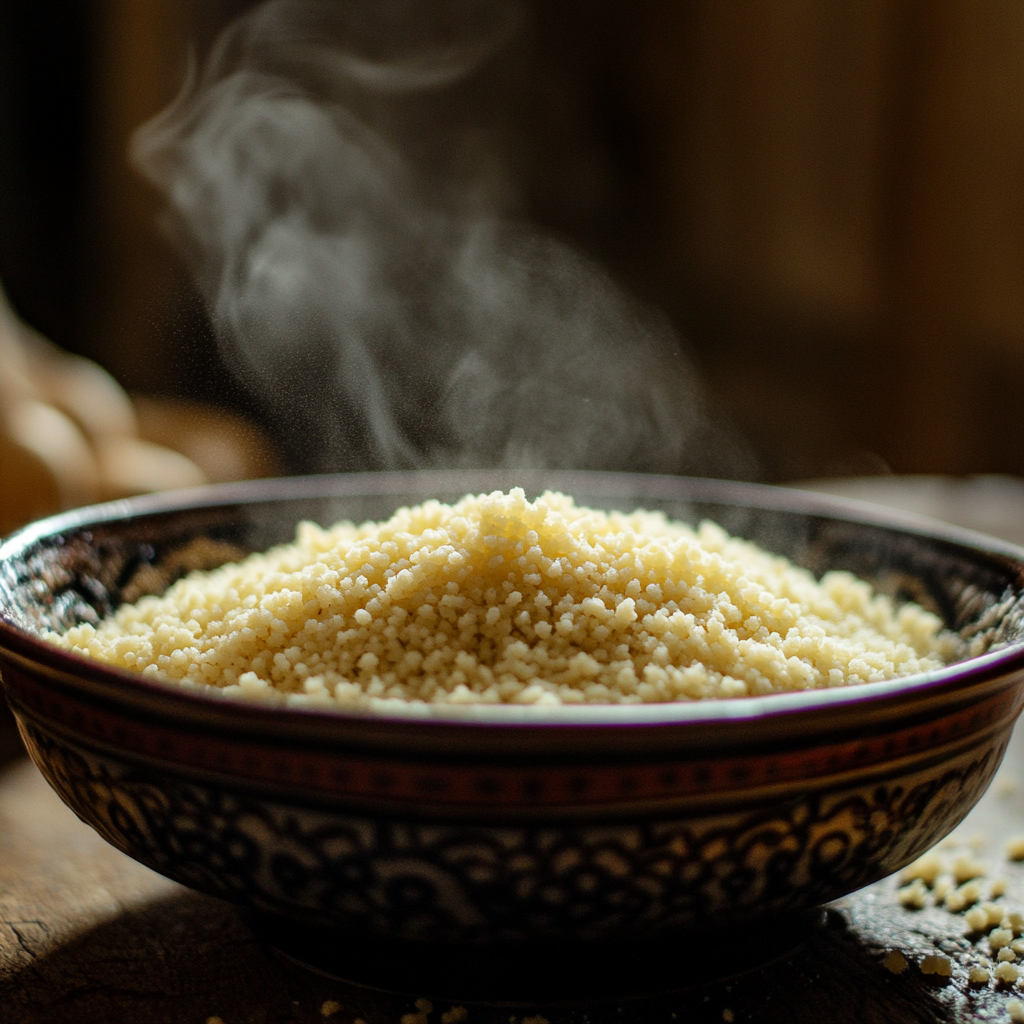
Comparison with Other Grains
Couscous stands out among other grains for its quick cooking time and versatility. Unlike rice or quinoa, couscous requires only a few minutes to steam, making it a convenient option for busy cooks. While rice is a staple in many cultures, couscous offers a lighter texture and can absorb flavors more effectively. Quinoa, on the other hand, is known for its high protein content and complete amino acid profile.
However, Flavorful couscous provides a good source of protein and essential nutrients like selenium and B vitamins. Compared to bulgur, couscous has a finer texture and a more neutral taste, allowing it to pair well with a variety of dishes. Each grain has its unique qualities, but couscous remains a favorite for its ease of preparation and adaptability in diverse recipes.
Incorporating Flavorful couscous into a Balanced Diet
Couscous is a versatile grain that fits well into a balanced diet. It can be used as a base for salads, mixed with vegetables, or served alongside lean proteins. For a nutritious meal, try pairing couscous with grilled chicken and a variety of colorful vegetables.
You can also add it to soups and stews for added texture and nutrients. Couscous is quick to prepare, making it a convenient option for busy weeknights. Its mild flavor allows it to complement a wide range of dishes.
Incorporating couscous into your meals can help you enjoy a balanced diet while exploring new and exciting flavors.
Delicious Couscous Recipes
Easy and Quick Couscous Salad
Creating a couscous salad is simple and fast. Start by cooking couscous according to package instructions. Fluff it with a fork and let it cool. In a large bowl, combine the couscous with chopped vegetables like cucumbers, tomatoes, and bell peppers. Add some fresh herbs such as parsley and mint for extra flavor.
For protein, include chickpeas or grilled chicken. Dress the salad with olive oil, lemon juice, salt, and pepper. Toss everything together until well mixed. This salad is perfect for a light lunch or a side dish. It’s not only delicious but also packed with nutrients. Enjoy the fresh and vibrant flavors of this easy couscous salad.
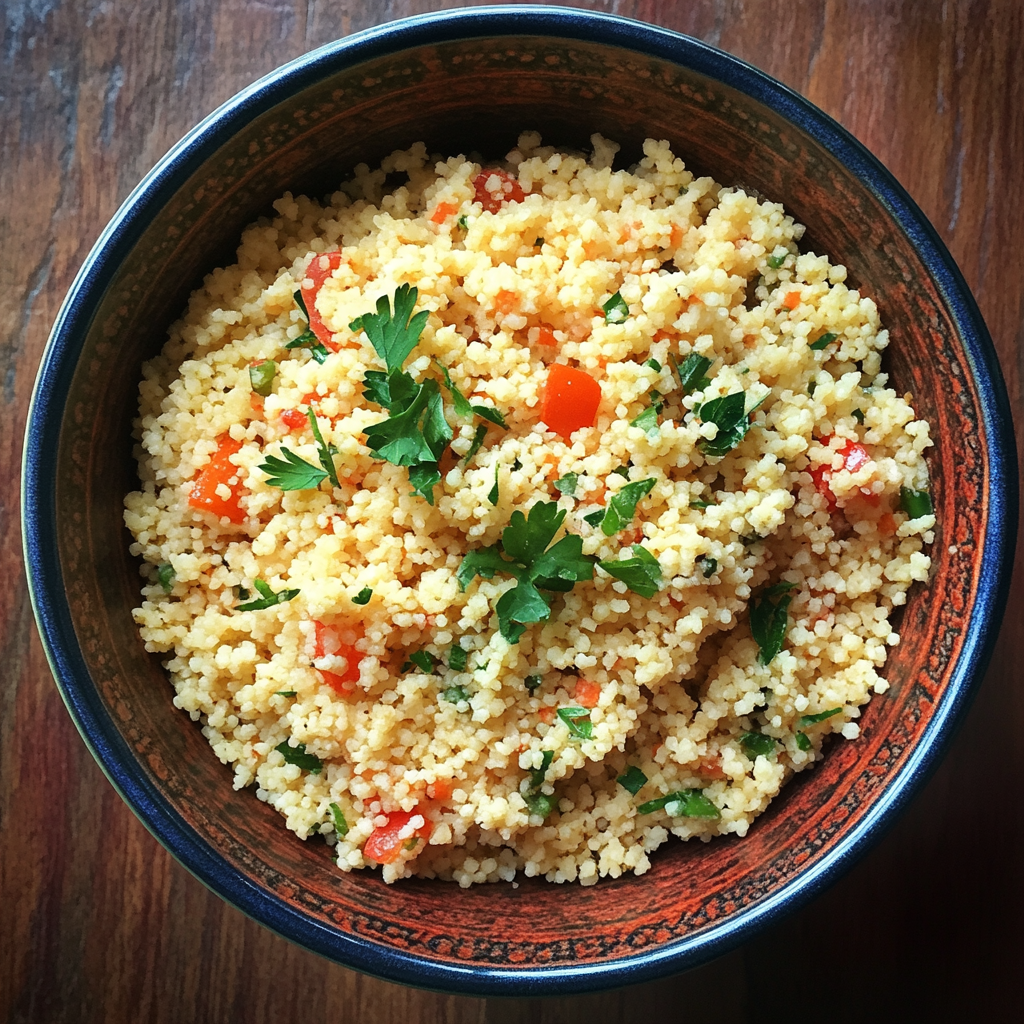
Flavorful couscous with Vegetables and Herbs
Creating a flavorful couscous dish with vegetables and herbs is simple and rewarding. Start by cooking couscous according to package instructions. In a large pan, sauté chopped onions, garlic, and bell peppers until they are soft. Add diced zucchini, carrots, and cherry tomatoes, cooking until tender. Mix in the cooked couscous and stir well. Season with salt, pepper, and a pinch of cumin for extra flavor.
Finally, add fresh herbs like parsley, cilantro, and mint. Toss everything together until well combined. This dish is perfect as a side or a light main course. Enjoy the vibrant flavors and textures of this delicious couscous creation.
Sweet Couscous Dessert Ideas
Couscous isn’t just for savory dishes; it can also be transformed into delightful desserts. Start by cooking couscous with milk instead of water for a creamy base. Add a touch of honey or maple syrup for sweetness. Mix in dried fruits like raisins, apricots, and dates for a burst of flavor. You can also add nuts such as almonds or pistachios for a crunchy texture.
For a refreshing twist, try adding fresh fruits like berries or citrus segments. Sprinkle with cinnamon or nutmeg for a warm, aromatic finish. Serve chilled or at room temperature for a delicious and unique dessert. These sweet couscous ideas are perfect for satisfying your sweet tooth while enjoying a healthy treat.
Tips for Perfectly Cooked Flavorful couscous
Choosing the Right Type of Couscous
Selecting the right type of couscous can enhance your culinary experience. There are several varieties to choose from, including Moroccan, Pearl and Lebanese couscous.
Moroccan couscous is the smallest and cooks quickly, making it ideal for salads and side dishes. Pearl couscous has a larger chewier texture and is perfect for stews and soups. Lebanese couscous, the largest of the three, requires a longer cooking time and works well in hearty dishes.
When choosing couscous, consider the dish you plan to prepare and the texture you desire. Each type offers unique qualities that can elevate your meals. Experiment with different varieties to find your favorite and enjoy the versatility of this flavorful grain.
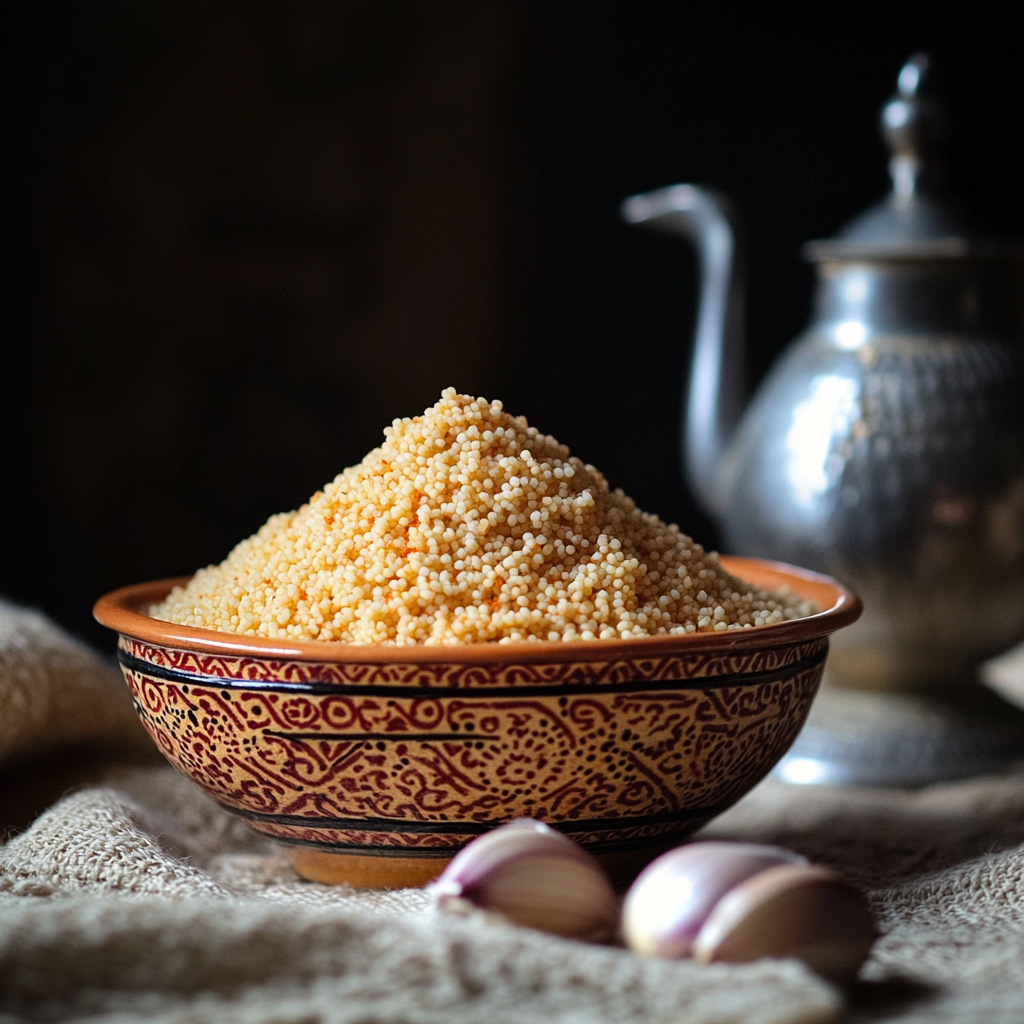
Step-by-Step Cooking Instructions
Cooking Flavorful couscous is simple and quick. Start by boiling water or broth in a pot. Use a ratio of 1 cup of couscous to 1.5 cups of liquid. Once the liquid boils, remove the pot from heat and add the couscous. Cover the pot and let it sit for about 5 minutes. This allows the couscous to absorb the liquid.
After 5 minutes, fluff the couscous with a fork to separate the grains. Add a drizzle of olive oil or a pat of butter for extra flavor. Season with salt and pepper to taste. Your couscous is now ready to be served as a side dish or incorporated into your favorite recipes. Enjoy the light and fluffy texture of perfectly cooked Flavorful couscous.
Common Mistakes to Avoid
When cooking couscous, there are a few common mistakes to watch out for. First, avoid using too much water, as this can make the couscous mushy. Stick to the recommended ratio of 1 cup of couscous to 1.5 cups of liquid.
Second, don’t skip the resting time. Letting the couscous sit covered for about 5 minutes allows it to absorb the liquid properly.
Third, fluff the couscous with a fork instead of stirring it with a spoon. This helps to separate the grains and prevent clumping.
Lastly, avoid overcooking the couscous. Once it has absorbed the liquid, it’s ready to be served. Following these tips will ensure your Flavorful couscous turns out light and fluffy every time.
Couscous in Modern Cuisine
Innovative Ways to Use Flavorful couscous
Couscous is incredibly versatile and can be used in many creative ways. Try using it as a base for a grain bowl, topped with roasted vegetables, avocado, and a drizzle of tahini sauce. You can also make a couscous-stuffed bell pepper by mixing cooked couscous with herbs, cheese, and spices, then baking it inside a halved pepper.
For a unique twist, use couscous as a crunchy topping for soups or salads. Simply toast the couscous in a pan until golden brown and sprinkle it over your dish.
Another idea is to incorporate couscous into your breakfast routine by making a sweet couscous porridge with milk, honey, and fresh fruits. These innovative uses of couscous can add variety and excitement to your meals.
Flavorful couscous in Fusion Dishes
Flavorful couscous is a fantastic ingredient for fusion dishes, blending seamlessly with various cuisines. Try making a couscous sushi roll by using couscous instead of rice, filled with fresh vegetables and seafood.
Another idea is to create a couscous stir-fry, combining it with Asian-inspired flavors like soy sauce, ginger, and sesame oil. You can also make a Mediterranean-inspired couscous taco, using couscous as the base and topping it with grilled vegetables, feta cheese, and tzatziki sauce.
These fusion dishes showcase the versatility of couscous and allow you to experiment with different culinary traditions. Enjoy the unique and delicious combinations that couscous can bring to your table.
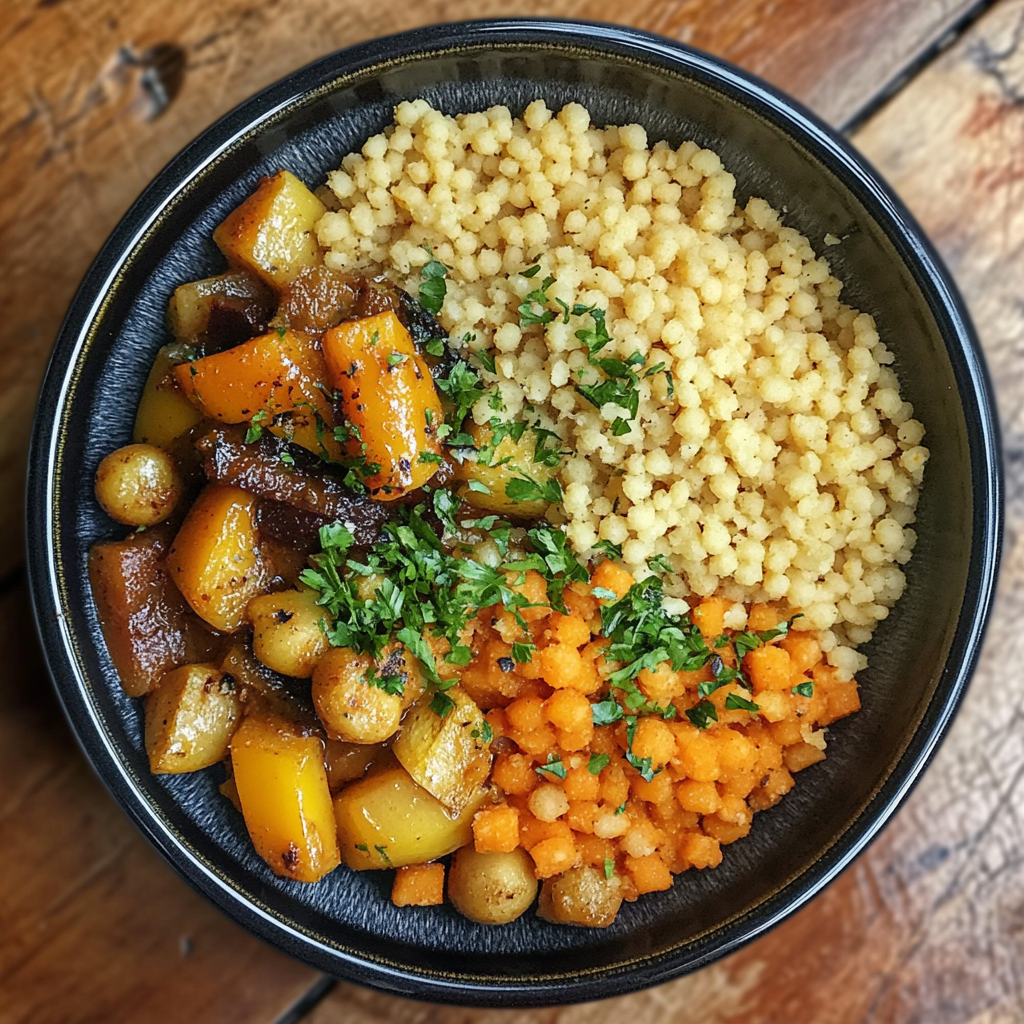
Popular Couscous Dishes in Restaurants
Couscous has become a favorite in many restaurants worldwide. One popular dish is Moroccan couscous, often served with a rich stew of lamb, vegetables, and aromatic spices.
Another favorite is couscous salad, featuring fresh vegetables, herbs, and a tangy dressing. In Mediterranean restaurants, you might find couscous paired with grilled seafood, such as shrimp or fish, creating a delightful and flavorful combination.
Some chefs also experiment with couscous in fusion dishes, blending it with ingredients from different cuisines to create unique and exciting flavors. These popular couscous dishes showcase the versatility and appeal of this beloved grain, making it a staple on many restaurant menus.
Conclusion
Couscous is a versatile and nutritious grain that can elevate any meal. From its rich history and cultural significance to its health benefits and delicious recipes, couscous offers endless possibilities. By incorporating couscous into your diet, you can enjoy a variety of flavors and textures.
Whether you prefer traditional dishes or innovative fusion creations, Flavorful couscous is sure to delight your taste buds. Try out the recipes and tips shared in this blog post, and discover the magic of couscous in your kitchen. Happy cooking!
